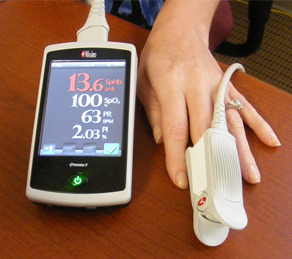The authors of this paper ("reps from the military's Tactical Casualty Combat Committee, PHTLS, civilian state EMS directors, trauma surgeons, emergency physicians, a pediatric surgeon, an EMS researcher, a GRADE methodologist, and a paramedic" - from USA & Canada) systematically reviewed the literature regarding the use of tourniquets and hemostatic agents for the management of life-threatening extremity and junctional hemorrhage. After sifting through the evidence, the authors then applied GRADE methodology to formulate and answer relevant clinical questions regarding these products as well as to summarize the quality of the evidence.
Here's what they came up with:
Tourniquets
- We recommend the use of tourniquets in the prehospital setting for the control of significant extremity hemorrhage if direct pressure is ineffective or impractical. [Strength: Strong; Quality: Moderate]
- We suggest using commercially produced windlass, pneumatic, or ratcheting devices that have been demonstrated to occlude arterial flow. [Strength: Weak; Quality: Low]
- We suggest against the use of narrow, elastic, or bungee-type devices. [Strength: Weak; Quality: Low]
- We suggest that improvised tourniquets be applied only if no commercial device is available. [Strength: Weak; Quality: Low]
- We suggest against releasing a tourniquet that has been properly applied in the prehospital setting until the patient has reached definitive care. [Strength: Weak; Quality: Low]
Junctional Hemorrhage Devices
"We believe this is an important area for further study, but did not find sufficient evidence to make a recommendation at this time."
Topical Hemostatic Agents
- We suggest the use of topical hemostatic agents, in combination with direct pressure, for the control of significant hemorrhage in the prehospital setting in anatomic areas where tourniquets cannot be applied and where sustained direct pressure alone is ineffective or impractical. [Strength: Weak; Quality: Low]
- We suggest that topical hemostatic agents be delivered in a gauze format that supports wound packing. [Strength: Weak; Quality: Low]
- Only products determined effective and safe in a standardized laboratory injury model should be used. [Strength: Weak; Quality: Low]
Additional Recommendations
- We advise that tourniquets and topical hemostatic agents be used under clinical practice guidelines and following product specific training.
- We advise that hemostatic agent training for prehospital personnel include proper wound packing and pressure application techniques.
- We advise that tourniquets and topical hemostatic agents use be expanded to include all prehospital personnel, including emergency medical responders.
Bibliography:






